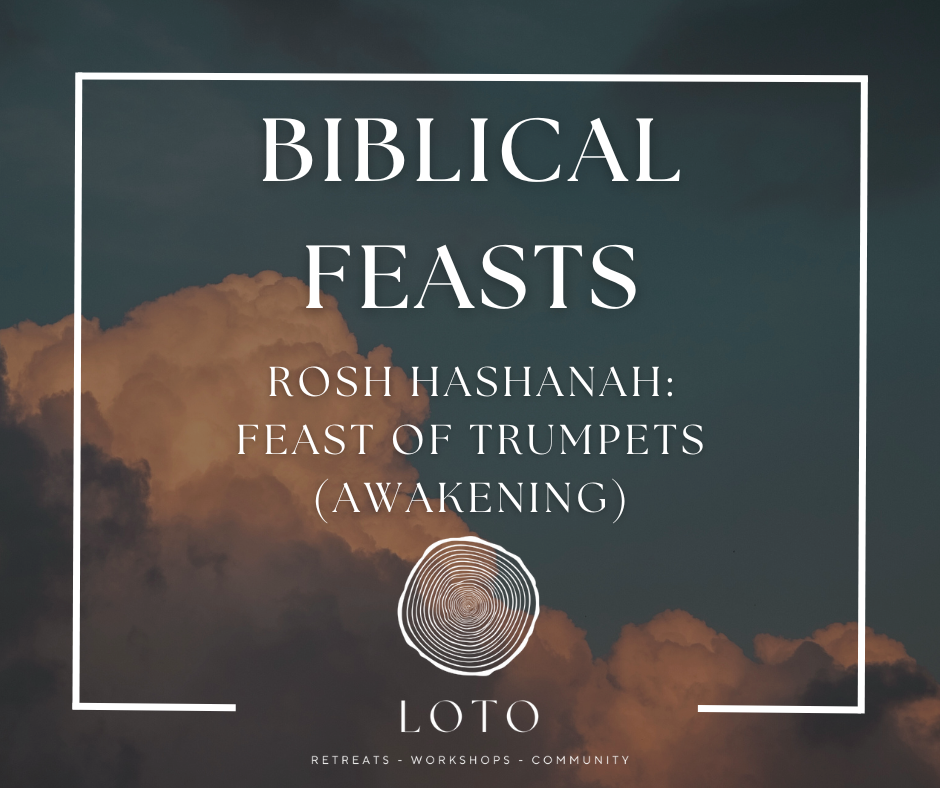Biblical Feasts: Yom Kippur (Day of Atonement)—Renewal
“On this day atonement will be made for you, to cleanse you. Then, before the Lord, you will be clean from all your sins.”—(Leviticus 16:30)
The Day of Atonement, or Yom Kippur, is the holiest day in the Jewish year. It arrives like stillness after sound, silence after the trumpet's blast. The shofar has awakened us. The Days of Awe have humbled us. And now we stand at the summit of the journey — the day of Atonement, reconciliation, and renewal.
On this day, Israel fasts. Work ceases. The people gather in solemn assembly. It is a day not for feasting, but for facing — a day of honesty, humility, and release.
The Ancient Ritual
Leviticus 16 describes the central act of Yom Kippur: the high priest entering the Holy of Holies, the innermost sanctuary of the temple, to make Atonement for the people. Sacrifices were offered, sins confessed, and one goat — the scapegoat — was symbolically burdened with the nation's wrongs and sent into the wilderness, carrying them away. Another goat was offered on the altar, its blood sprinkled as a sign of cleansing.
It was the one day each year when Israel's covenant relationship with God was renewed in its fullness. The community left lighter, cleansed, reconciled. "On this day Atonement will be made for you, to cleanse you. Then, before the Lord, you will be clean from all your sins." (Leviticus 16:30)
Atonement as At-One-Ment
The English word Atonement can sound transactional, as if it were a cosmic bookkeeping exercise. But its older sense is more mystical: at-one-ment. Yom Kippur is not merely about wiping away wrongs; it is about restoring union. The people are reconciled with God, with one another, and with themselves. Alienation is dissolved. Oneness is remembered.
The prophet Micah gives this image: "Who is a God like you, pardoning iniquity… You will cast all our sins into the depths of the sea." (Micah 7:18–19) Mystics read this not as God erasing an angry ledger, but as God dissolving illusions of separation. What has been dividing us is carried away. We are restored to the truth of our being: one with God, one with life.
Recalibration and Return
The mystics teach that the Atonement is not about punishment but about recalibration — a holy return to alignment.
As the author of Mystical Jesus describes it:
"... God's universe is like a GPS. As soon as we take a wrong turn, the GPS recalculates our path. That recalculation, that return to right-minded thinking when the heart has been closed, is called the Atonement…
When fear occurs — a repetition of the original moment of separation — the universe is always ready to correct itself. The question is whether we are. All of us fall off the spiritual wagon more times a day than we care to admit. But at any given moment, we can choose again. That is the power of the Atonement…
Every time we realize, 'Yep, I wasn't my best in that instance,' we can place that moment into the hands of God, atone for our error, and pray for the chance to begin again. He will provide it. That is the power of the Atonement. It isn't a fix; it's a miracle."
This way of seeing reveals Atonement as a continual invitation. Not a once-a-year ritual only, but an ever-present possibility: we can always begin again.
The Nondual Invitation
Western theology often frames Atonement in dualistic terms: guilty vs. innocent, condemned vs. saved, wrath vs. mercy. But the mystics invite us to hear Yom Kippur differently. It is not a day of dividing, but of reuniting.
The scapegoat itself can be seen as a mirror: it carries not only the people's failures but their projections — the false selves, the illusions of who they are not. By releasing the scapegoat, they release illusions that keep them bound.
In Christian mystical tradition, Christ embodies the fullness of Atonement — not as appeasement, but as union. As Julian of Norwich wrote, "Between God and the soul there is no between." The Atonement is not about crossing a chasm. It is the unveiling that no chasm has ever truly existed.
The Silence of Mercy
If the Feast of Trumpets is sound, Yom Kippur is silence. The people fast, not to punish themselves, but to listen more deeply. Hunger sharpens attention. Silence opens space for Presence.
This is the silence of mercy — the holy pause where we discover that forgiveness is not something we earn, but something we awaken to. Repentance (teshuvah) means "return." Yom Kippur is the day of returning home to God, who has never left.
Practicing Atonement Today
We may not release goats into the wilderness, but we still know the weight of burdens we long to let go of. We know the heaviness of resentment, shame, or guilt. Yom Kippur invites us to place them into the hands of God, who always recalculates our path toward love.
To practice Atonement is to practice reconciliation: seeking forgiveness where we have harmed, offering forgiveness where we have been hurt, and forgiving ourselves for the ways we forget who we are.
It is the day of remembering that mercy is larger than our failures, and that grace restores what shame divides.
Reflection Questions
What burdens are you carrying that you long to release into God's mercy?
Where in your life do you sense God "recalculating" your path toward wholeness?
How does it shift your perspective to see Atonement not as punishment, but as a miracle?
Who in your life are you being invited to reconcile with — and how might that reconciliation restore your own heart as well?
Yom Kippur is the exhale after the trumpet's alarm and the days of awe. It is the sacred pause where mercy renews us and union is remembered. But the journey does not end in solemnity. Forgiveness clears the way for joy. Renewal prepares us for celebration. And just days later comes the Feast of Tabernacles, Sukkot — a festival of dwelling, abundance, and delight in God's Presence.









Yom Kippur is not merely about wiping away wrongs; it is about restoring union. The people are reconciled with God, with one another, and with themselves. Alienation is dissolved. Oneness is remembered.